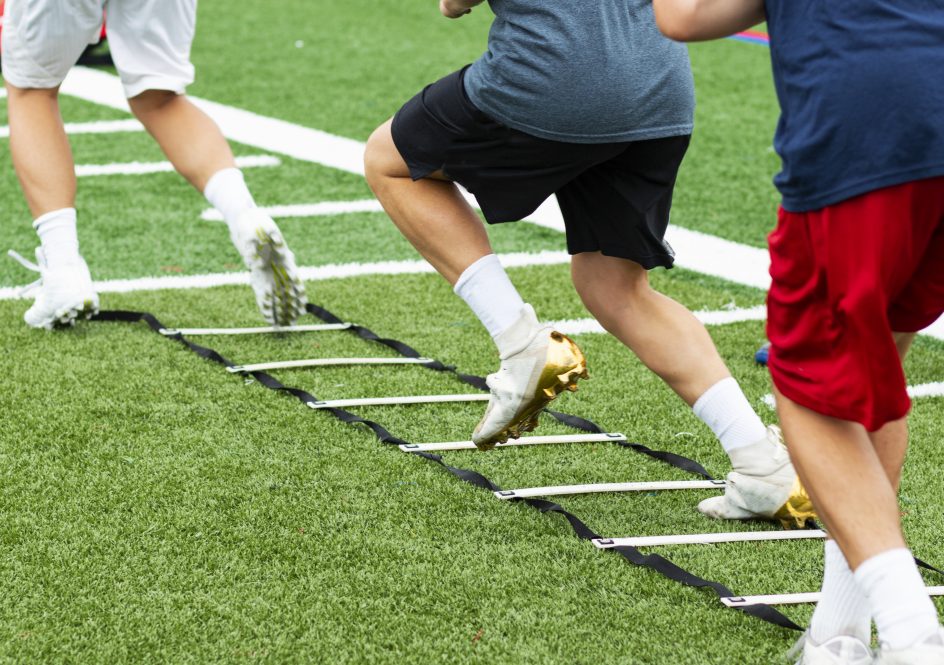Starting in 2017, UConn’s Korey Stringer Institute (KSI), a part of the College of Agriculture, Health, and Natural Resources, began publishing annual reports and bi-annual updates examining the health and safety policies for secondary schools for each individual state and Washington, D.C. The evaluations are based on safety measures states can implement, including emergency action plans, having automatic external defibrillators on site, training coaches to look for signs of concussion, treatment of exertional heat stroke and others. Since KSI began this process three years ago, 38 states have adopted legislative or state high school athletic association changes that improve safety for student athletes, according to its latest findings.
The paper detailing nationwide updates and progress was published this week in the American Journal of Sports Medicine.
The report illustrates the progress made since 2017, and it also helps Team Up for Sports Safety (TUFSS) zero in on ways to help decision makers take steps toward further improvements to safeguard athlete safety.
KSI and the TUFSS initiative has a mission to travel state-to-state to meet with policymakers to ensure life-saving policies are adopted nationwide, explains Rebecca Stearns Assistant Professor, Department of Kinesiology, Chief Operating Officer of the Korey Stringer Institute, and Director of TUFSS.
“We decided to do a state-based approach and make it a really targeted, individualized approach for the states,” she says.
Policies take time to be implemented, but TUFSS strives to make the process smoother by meeting with key individuals from each state to help identify areas for swift and impactful change. The process involves scheduling meetings with representatives from each state to present policies and measures tailored to that state, which address areas for improvement.
“We meet with key individuals – for instance, the State Athletic Association, sports medicine, advisory committees, superintendents, principals, legislators, anybody that could play a role in either enforcing or implementing the policies for high school sport safety,” says Stearns. “Then we focus on four conditions we call the four H’s; head, heart, heat, and hemoglobin, which translate to cardiac arrest, head injuries, heat stroke, and sickle cell trait. Those four conditions make up 90% of the deaths that we see, so that’s why we target those when we go to the state meetings.”
By the end of the meeting, Stearns says, “We have a policy document that the decision makers can take forth and be voted upon or put through a legislative route.”
This approach has been successful, as outlined in the report, with every state that has met with TUFSS seeing significant improvements at implementing life-saving safety measures.
“In the last three years, the top five states [with improved safety] were all states that TUFSS visited,” Stearns says. “We’re proud of the fact that those are the states making the biggest score increase in the last three years. Also, none of the states ranked in the bottom five have had a TUFSS meeting yet. In terms of the impact, the mean score increases by 10% after we’ve worked with states.”
Stearns explains that often the biggest hurdles in implementing policy changes are linked to funding questions, but that isn’t the sole obstacle.
“The other big roadblock is who ultimately has to answer for athlete health and safety. Is it the state high school association that is responsible for that? Is it legislative or laws?”
Despite those challenges, and the sometimes-slow process of policy change, the TUFSS team is encouraged by the report and the fact that momentum is building, but Stearns adds that more work needs to be done in raising awareness. With millions of students participating in sports each year, many schools across the country remain unprepared or underprepared to respond effectively in the event of potentially life-threatening complications.
“I think a lot of parents have this underlying assumption and kind of a false sense of security that, if you send your kids to practice, there are guidelines and rules in place that are going to protect them, when we know that that’s definitely not the case. Unfortunately, in the last five years we’ve seen over 300 sport-related deaths at the high school level alone, so we are just trying to curb that. Parents should be asking things like ‘Do you have an athletic trainer? Do you have an emergency action plan? Where is the nearest AED?’, Because those could all be things that save your child’s life. Bringing attention to it and getting parents in the local community to kind of push for this and support it and start asking questions, I think it goes a long way.”
The TUFSS team is scheduled to meet with several more states this year and next. To keep up with their progress and read more about the details of the report, see the publication (link), the latest rankings, and follow KSI on Facebook and Twitter.



